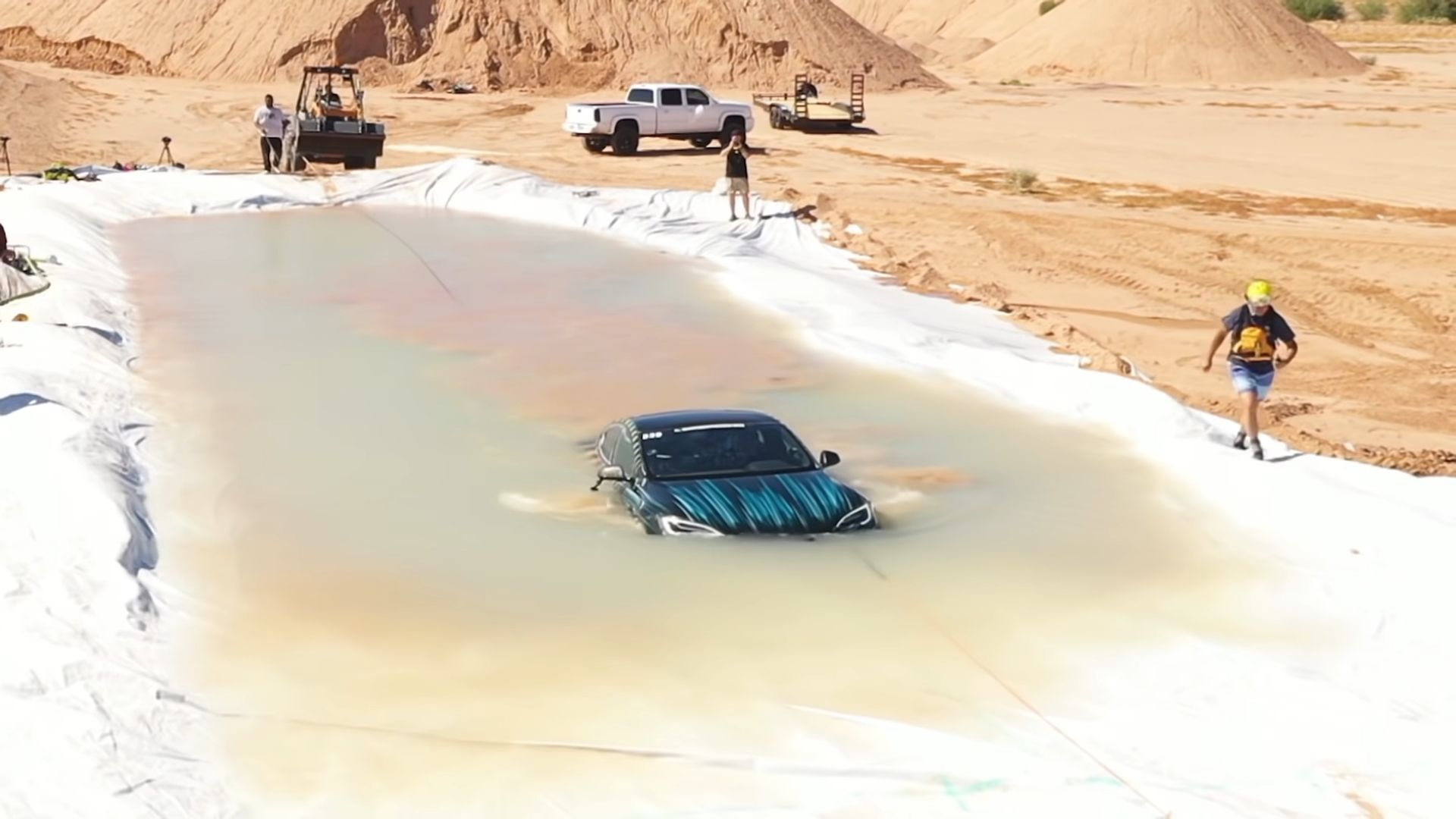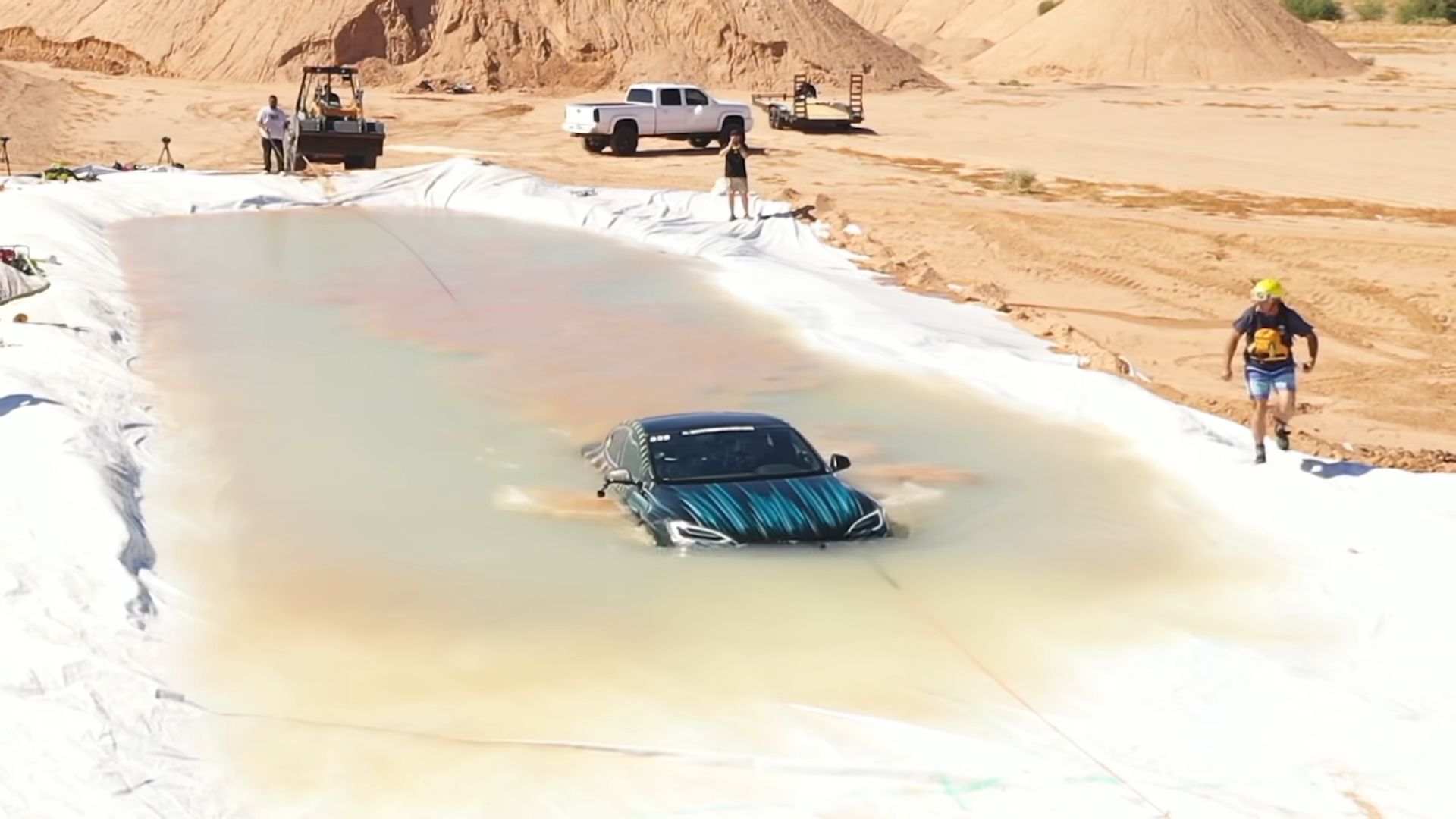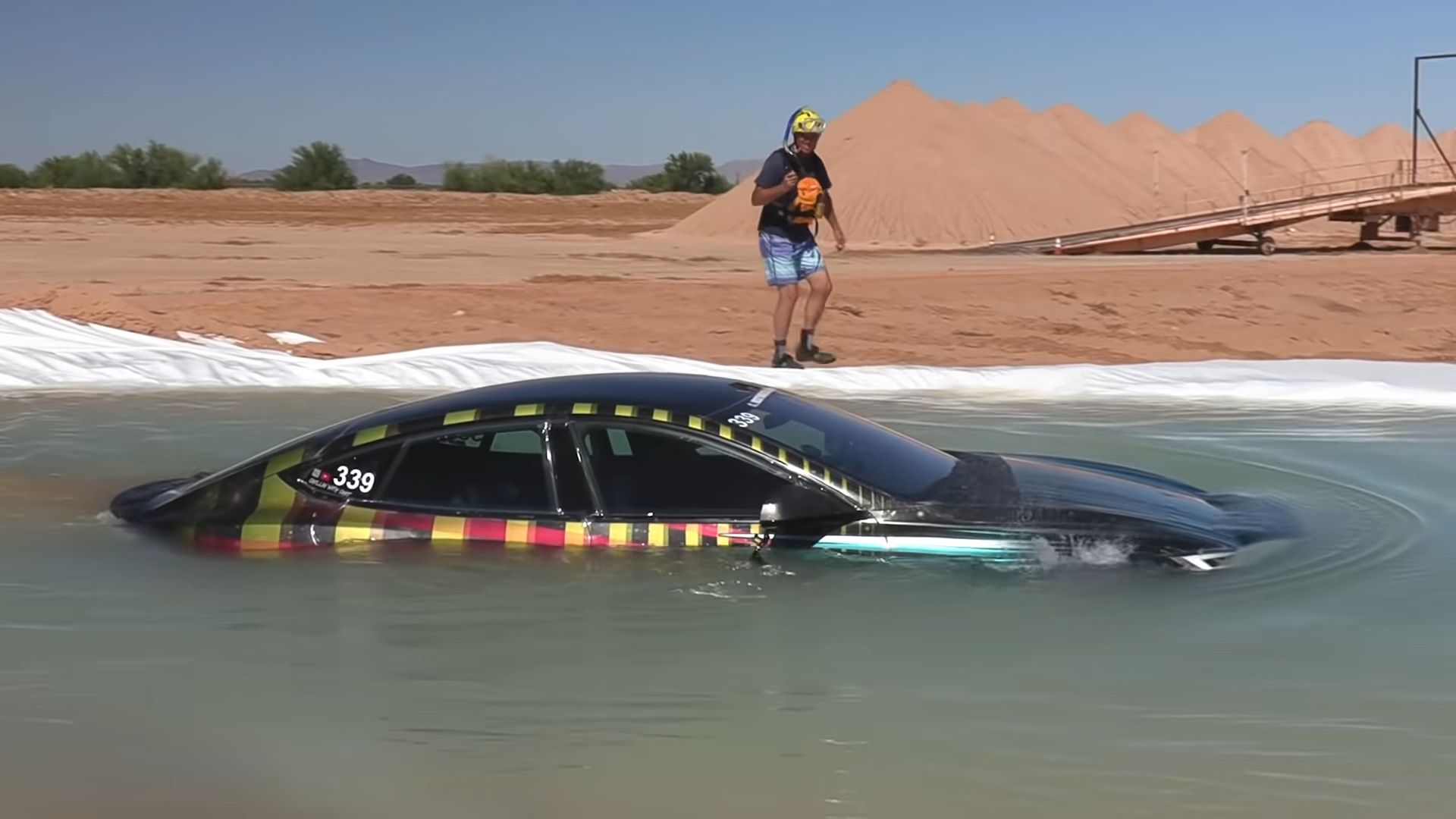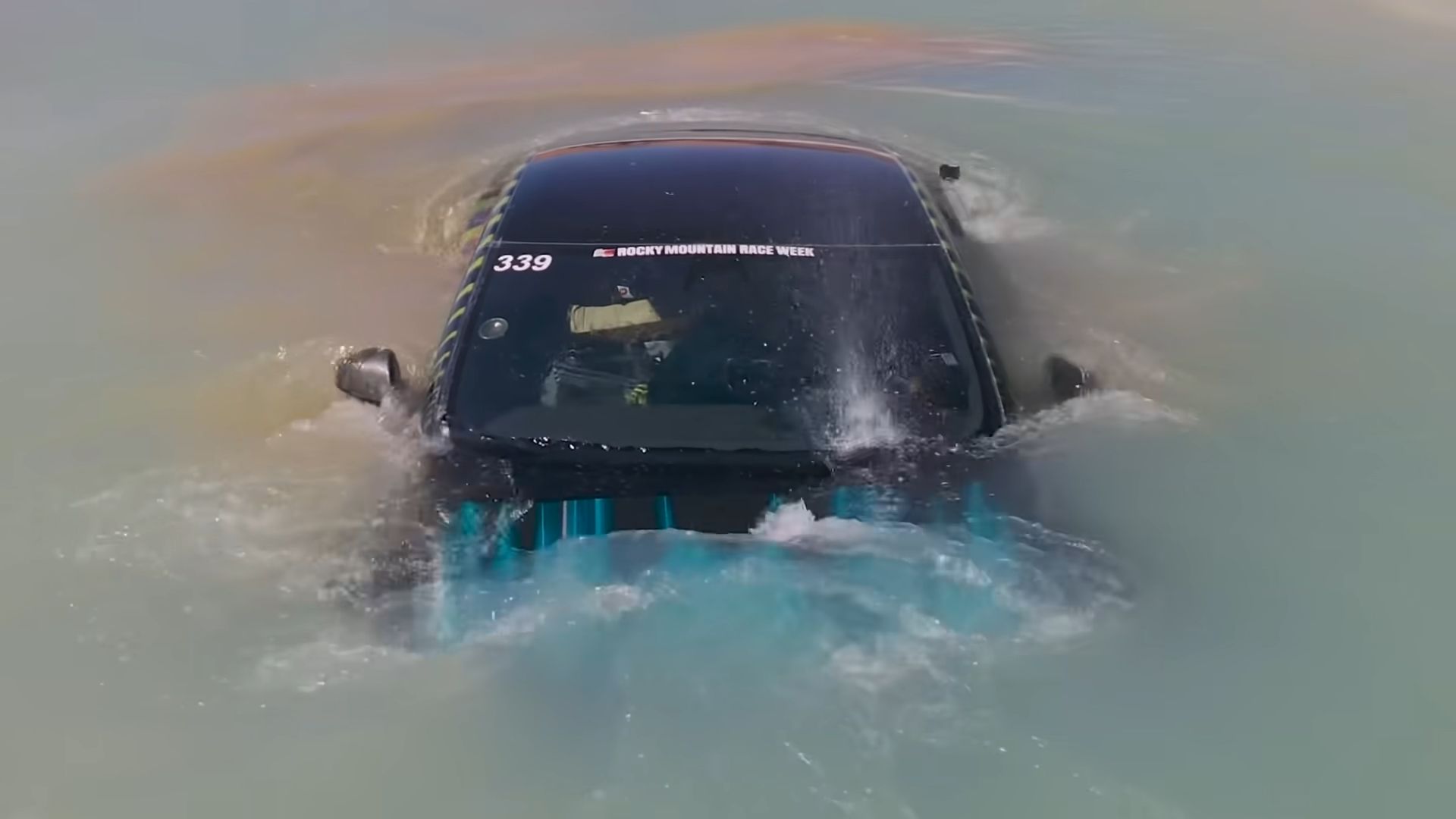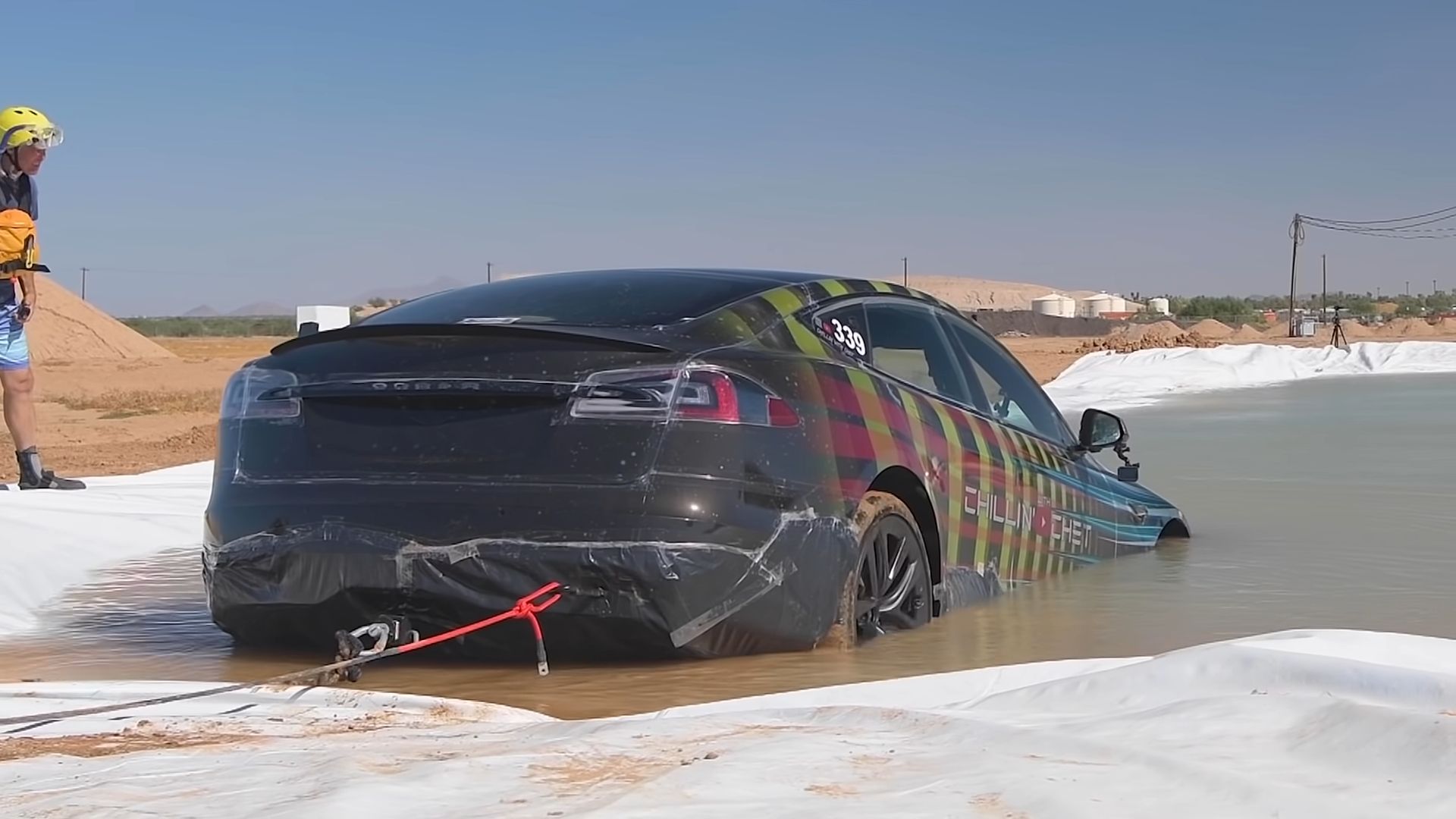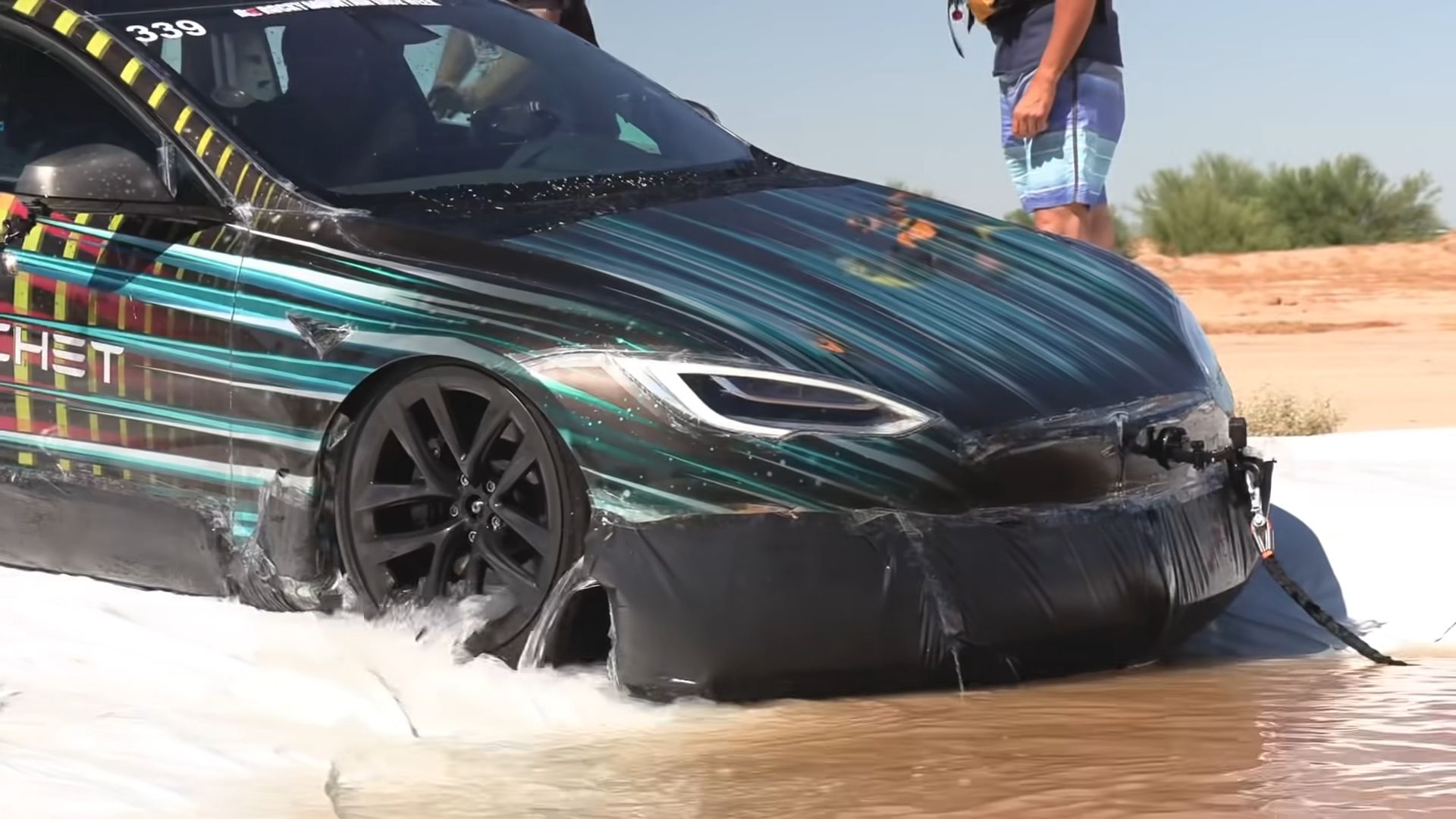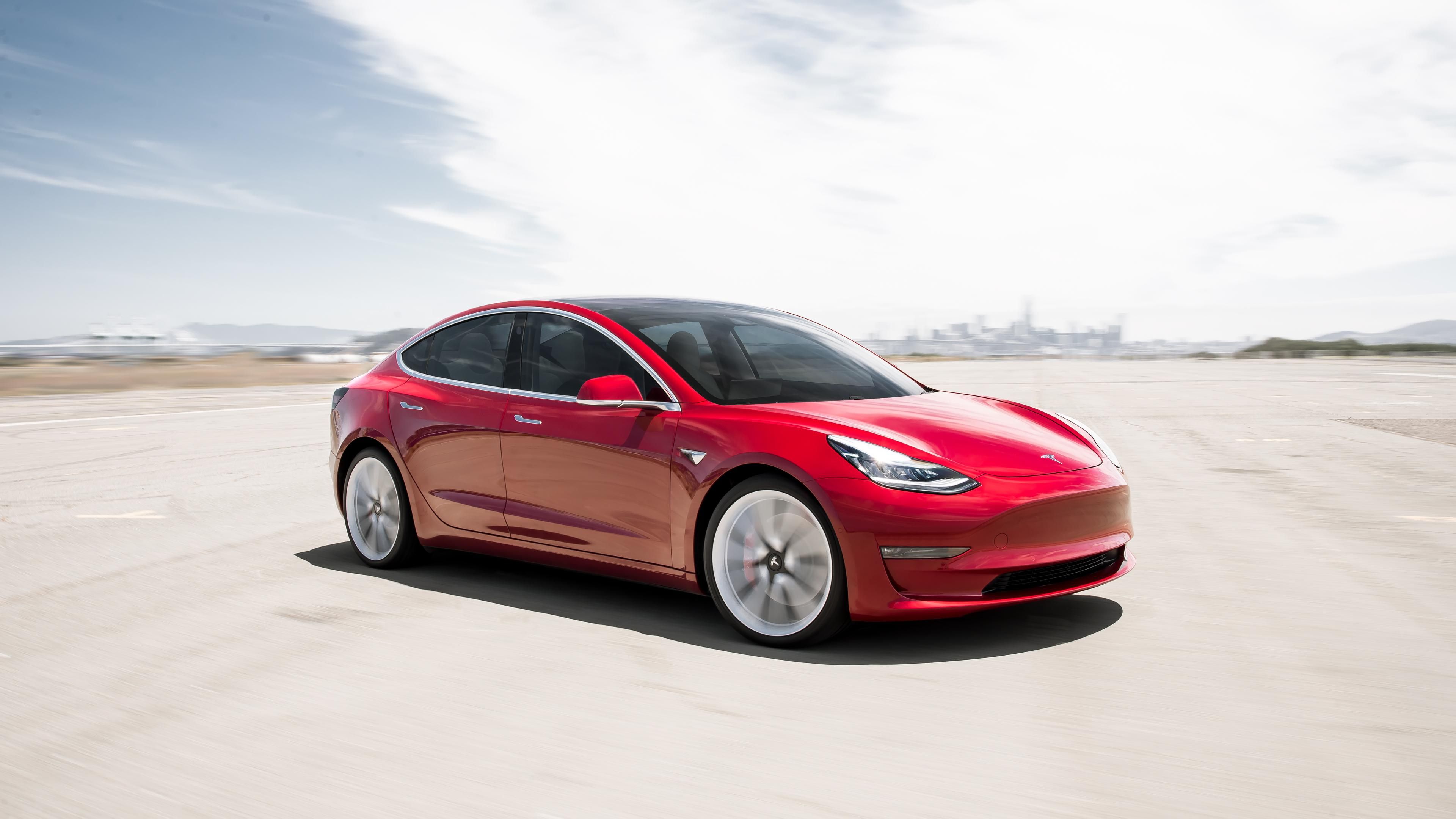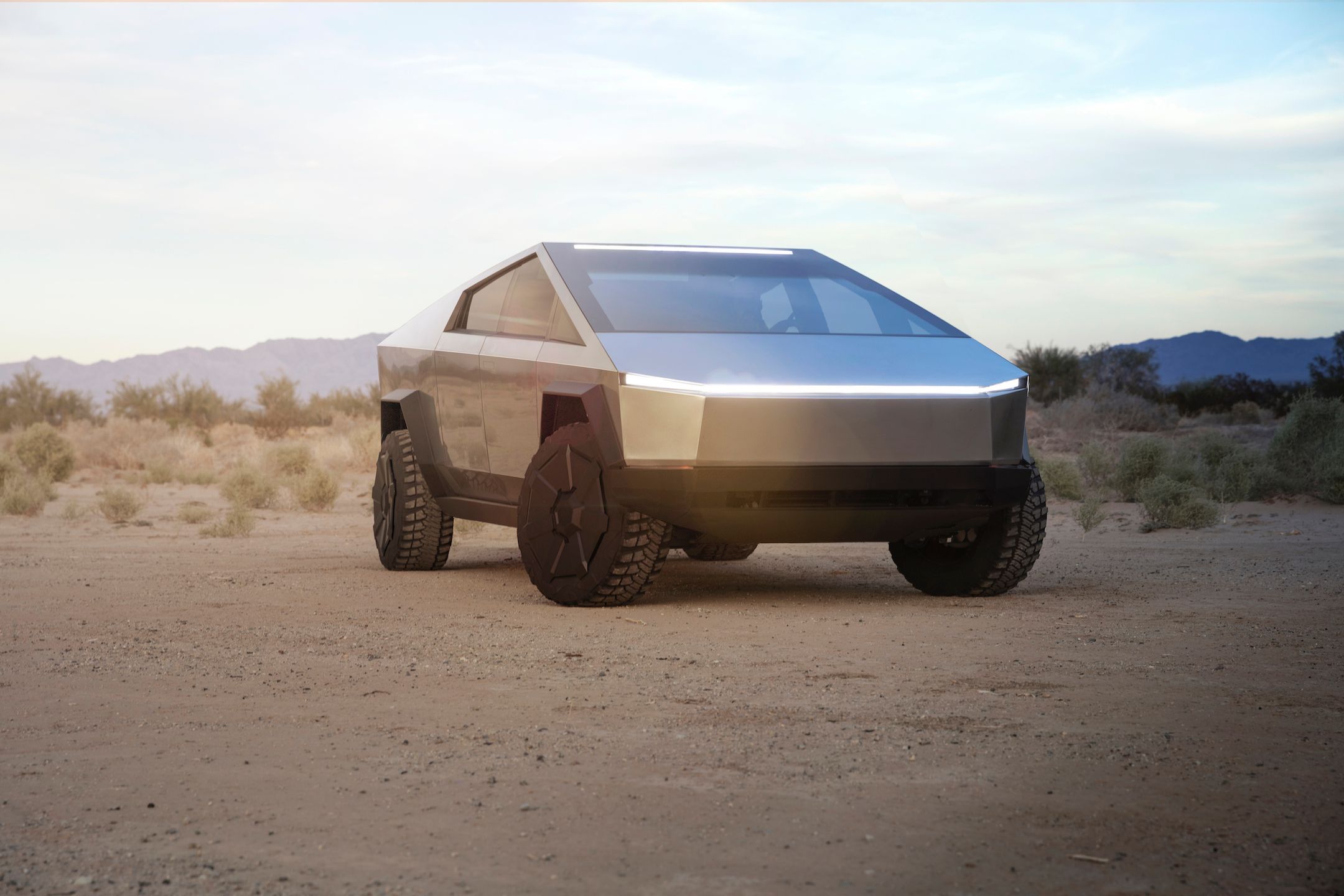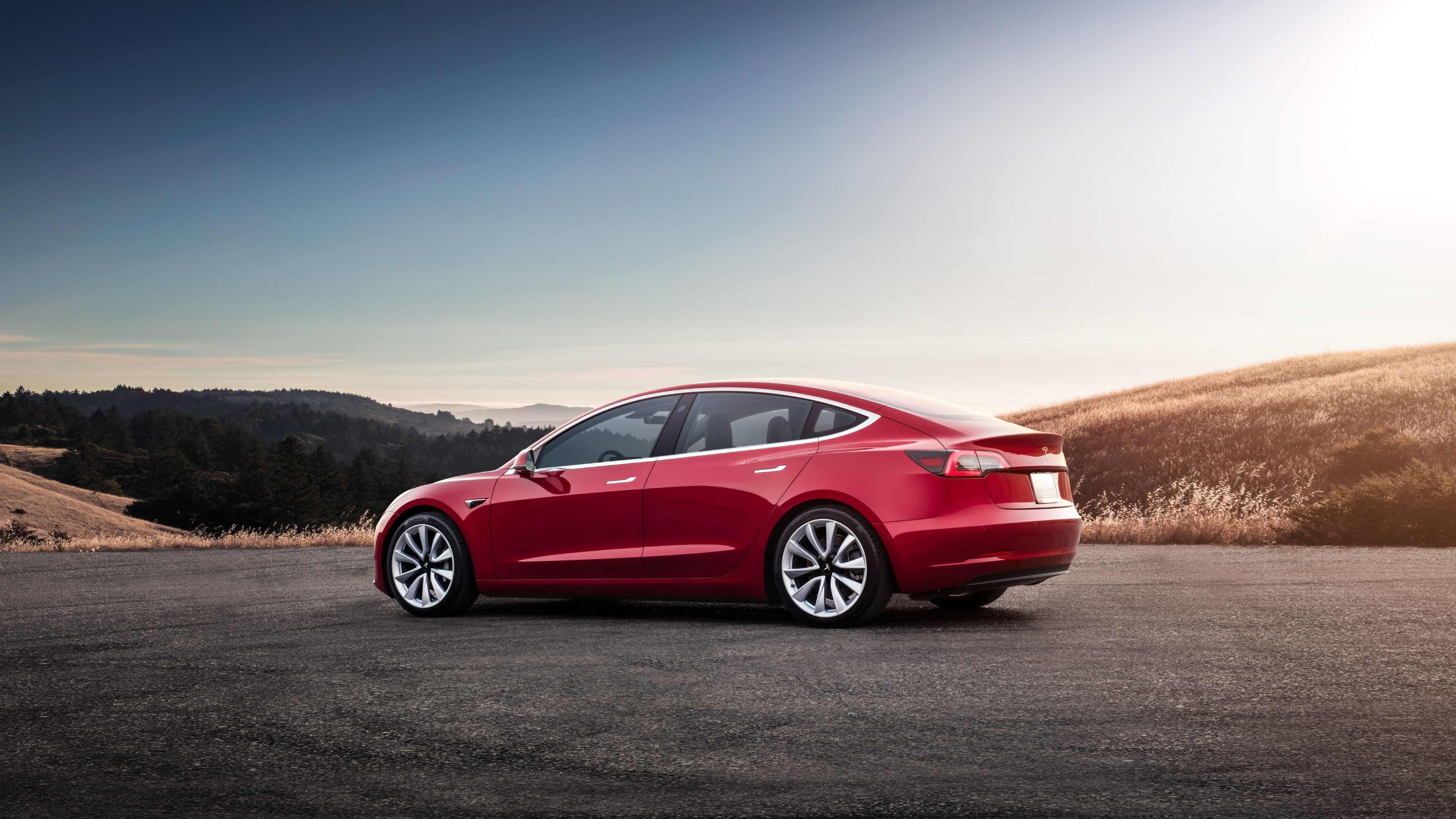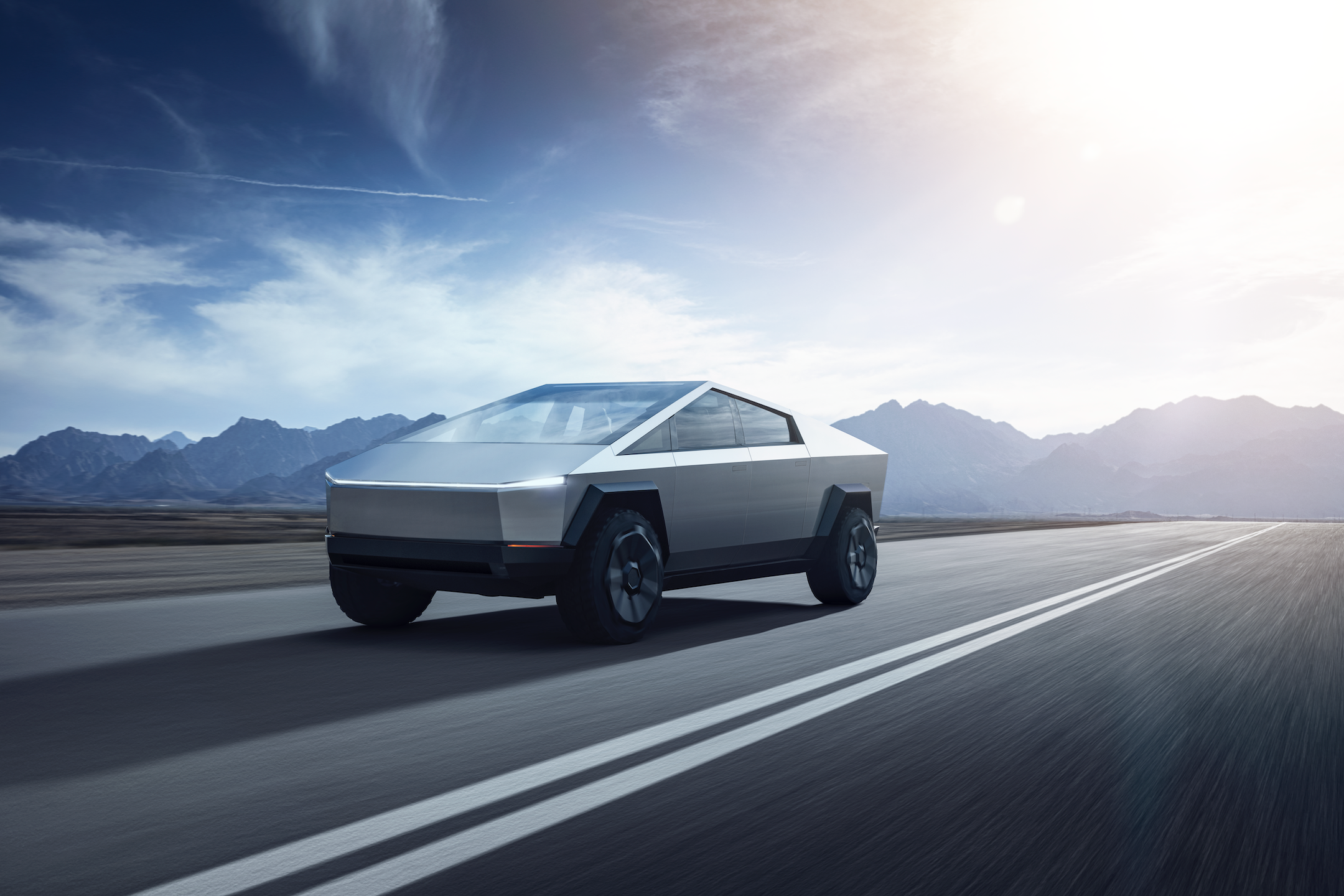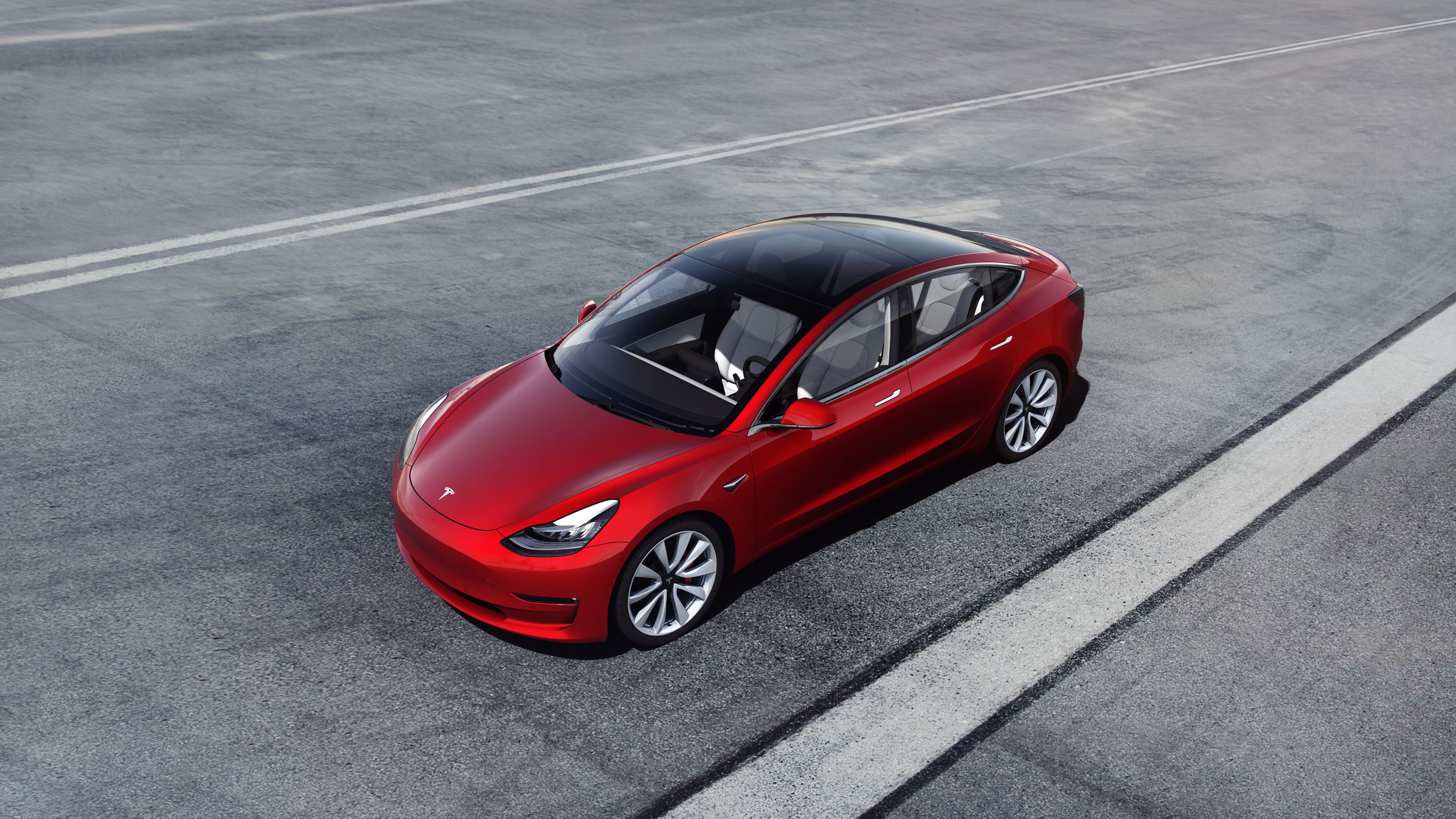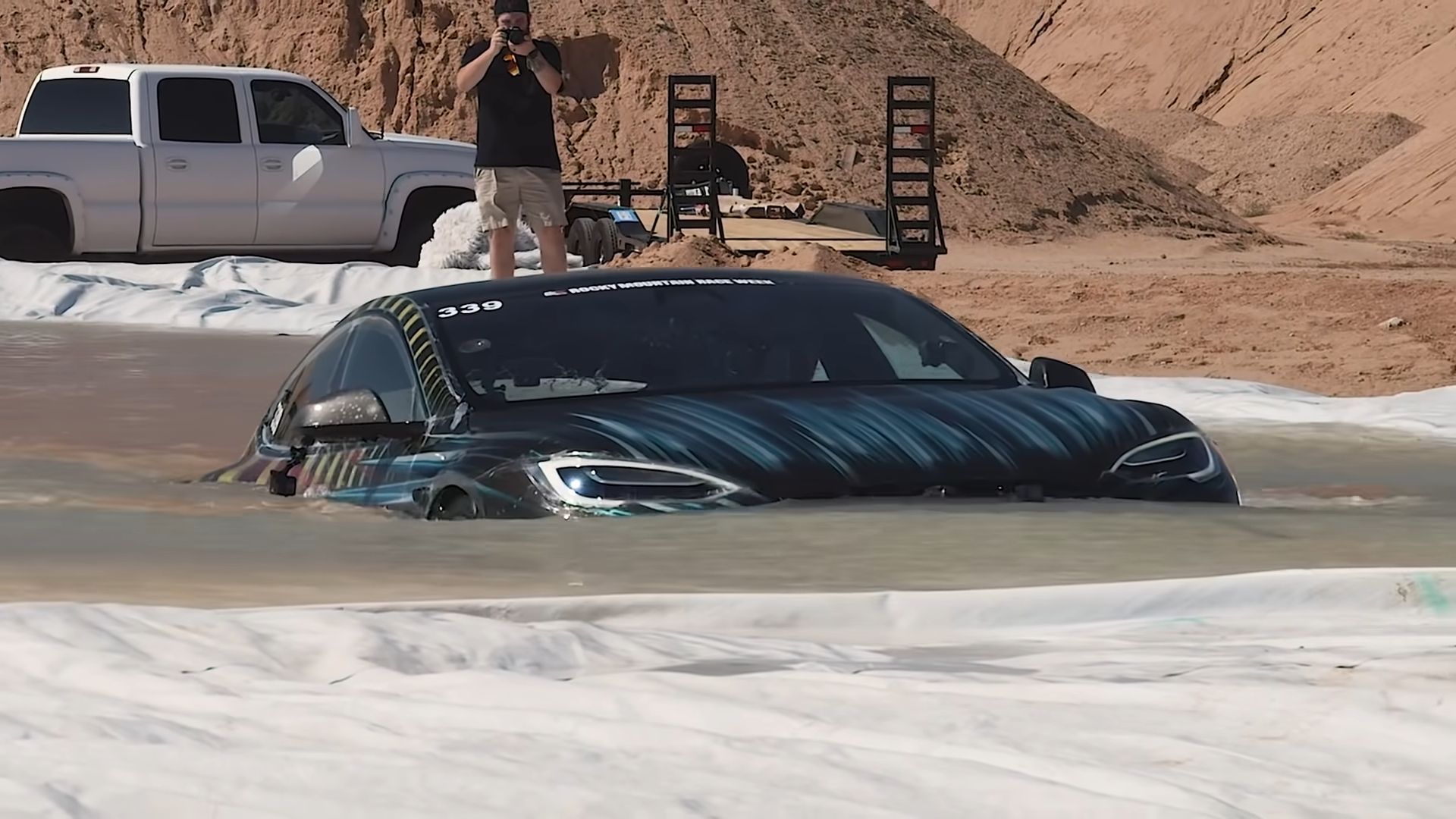It’s a well-known fact that EVs are better swimmers than internal combustion engines. But, how much better? Are they good at just wading, or can they actually “swim”? Well, Chet from ‘Chillin’ with Chet’ tested this out on his new Tesla Model S Plaid and proved that EVs can actually even be submerged! Of course, a lot of prep went into this ‘submarine test’, so don’t even think about trying this with your electric vehicle!
We Have Seen EVs Swim In The Past As Well
Not to this extent, but we have seen EVs swim in the past as well. The Tesla cars tend to float and this has been confirmed by Elon Musk five years back:
While it’s a good thing in general, in Chet’s experiment, it wasn’t. So, he decided to add around 7,000 pounds of weight in his cars with stripped-out interior to make sure the car doesn’t come up to the surface and floats. 7,000 pounds of weight seems a lot for a family sedan, the EV actually handled it well.
We don’t know the repercussions yet, but the suspension handled the weight during the ordeal. The total weight of the car was now around 13,000 according to Chet, which helped the car stay submerged. As for the course, it was created by the team and it seems to be filled with 80,000 gallons of water.
Speaking about the car itself, Chet and his team prepped to make it a successful attempt. The car’s cabin was stripped out, the body gaps and panels were covered with tape, and the car was towed at the front and back to ensure easy evacuation if there would be any mishaps.
The car had to be pulled out from the rear during the first attempt, but completed the course in the second attempt. When the car was out, it had standing water in the trunk and in the cabin as well.
The ‘Submarine’ Tesla Model S Plaid has received enough recognition and Chet will certainly be more than happy about it. To recap the Plaid’s specs with you, it comes with stuff like:
- A tri-motor setup
- Produces 1,020 horses combined
- 0-60 mph in 1.99 seconds under ideal conditions
- Quarter-mile run in 9.23 seconds with a trap speed of 155 mph as per Tesla, but has already done it in 9.081 seconds
- Top speed of 200 mph
- World’s most aero-efficient car - Drag coefficient of 0.208
- EPA-estimated range of 396 miles
- Supports fast charging up to 250 kW, and can add 187 miles of range in 15 minutes
- Features an F1-inspired, yoke steering wheel
- Starts at $129,990
Tesla Cars Are Good At Floating
Tesla as a submarine sure is new, but Tesla as a boat isn’t. Last year, a Tesla Model 3 in China traversed through a rather flooded road successfully. You can’t imagine a fuel-powered sedan going through anything like this due to the fear of hydrolock and the engine seizing.
That said, the Model 3 and the Model S aren’t the only ones that can float. The odd-ball, weird-looking, unorthodox Tesla Cybertruck can also do it. It has an exoskeleton design and isn’t based on a conventional skateboard-like platform. The face of the company himself confirmed this on Twitter.
The Cybertruck’s battery containers are covered using floor plates that offer diagonal strength at the bottom of this exoskeleton truck. Tesla has made use of vertical separators within the batteries that run front to back and sideways. Although it was to add rigidity, it is perhaps this design element that helps the truck float in water. Not to mention, the Cybertruck doesn’t have any ‘air dams’ around the body either. We haven’t seen this in action yet, so take the theory with a pinch of salt.
EVs Are Better In The Water Than The Internal Combustion-Engined Cars
I’m sure many of you know what a hydrolock is, but for the uninitiated, let me run it through. When an internal combustion-engined vehicle enters the water, the water can get into the engine through the vehicle's air intake valve. When the water gets into the cylinder, it replaces the gas required for combustion. The engine needs its piston to function smoothly for ignition. However, since water is non-compressible, it stops the piston from completing its stroke required to create the spark that ignites the engine, thus causing a mechanical failure, which could lead to an engine seizure. That why is lesson 101 is never to turn on the ignition if your car is deep in water as it will allow the water to enter the cylinders.
But, this doesn’t apply to EVs since there are no cylinders and pistons here. Most of the EVs available in the market today use a skateboard-design platform wherein they pack the batteries in the floor. The batteries are usually packed and sealed well that avoid water penetration to a large extent. But, just because there are no cylinders and pistons, it doesn’t mean you can take it into waters without giving a damn.
EVs currently are powered by lithium-ion batteries. Lithium reacts intensely with water, forming lithium hydroxide and highly flammable hydrogen. If the battery comes in contact with water, it could get short and discharged. Also, almost every EV that’s on sale today is heavy on tech and have a lot of electric parts inside the cabin as well. So, while it might be comparatively safer to take EVs through water, it isn’t recommended and you shouldn’t try to test this either.
Conclusion
Well, that got a little too technical, but coming back to the topic, we would love to see where Chet’s Model S Plaid goes from here. Will it be unabated by this event, or is the car crippled for life? Watch the full video below and share your thoughts about it in the comments section below.

